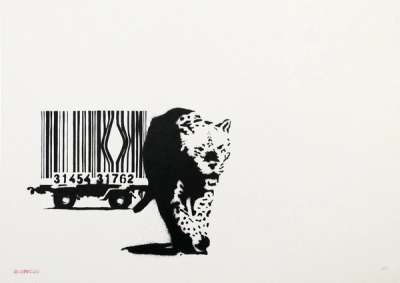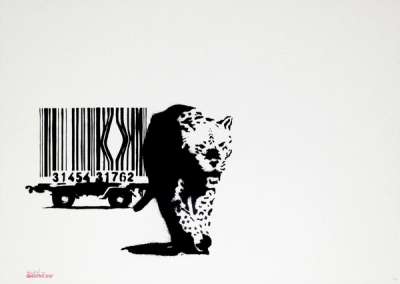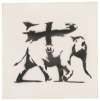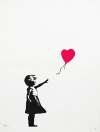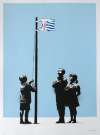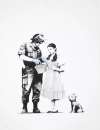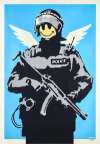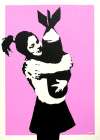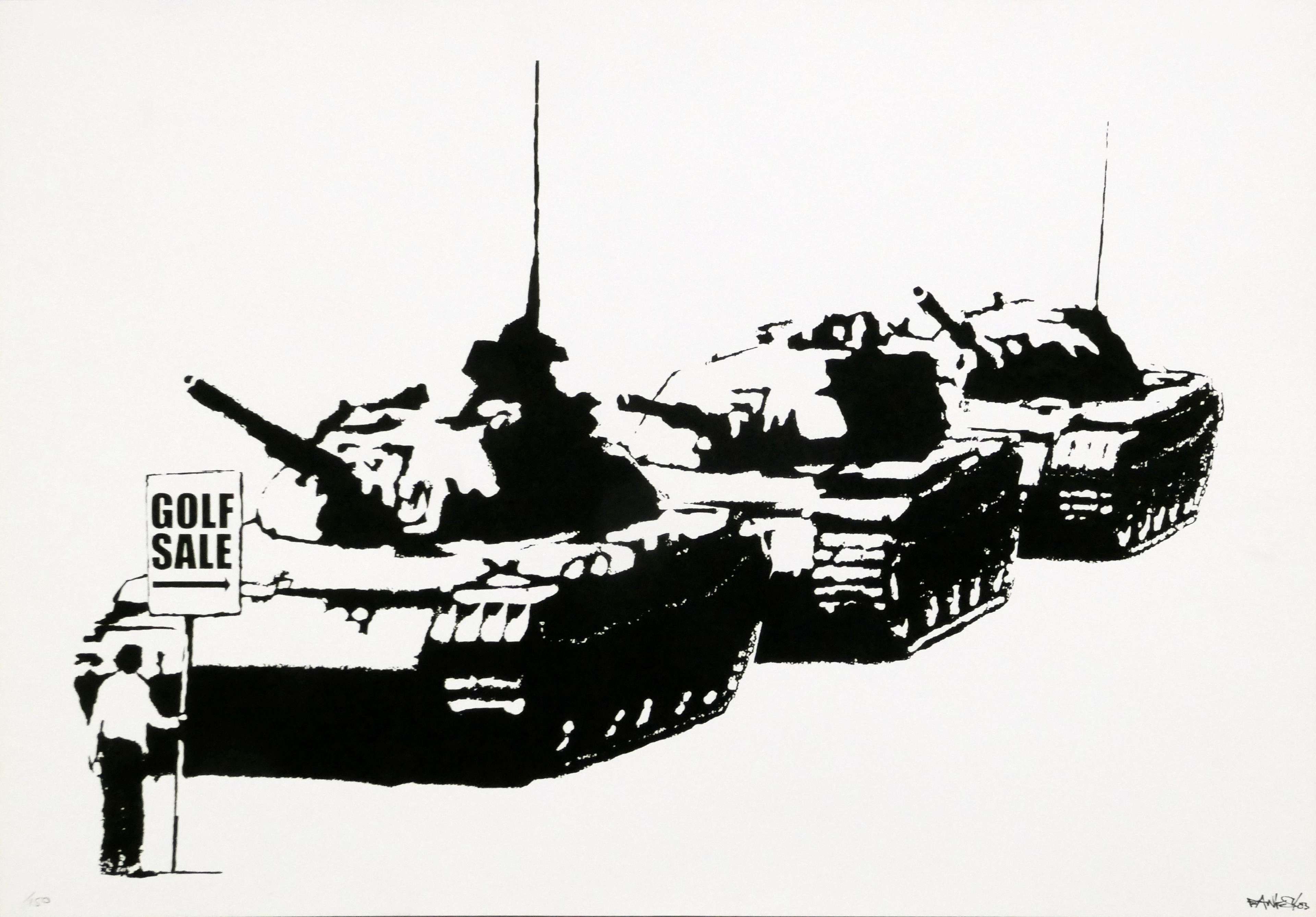Barcode
Banksy’s 2004 Barcode prints see the meeting of a leopard and a barcode, resembling bent cage bars. This ambiguous image is interpreted by most to be making a connection between consumerist capitalism and humanity's disregard for other species.
Banksy Barcode for sale
Sell Your Art
with Us
with Us
Join Our Network of Collectors. Buy, Sell and Track Demand
Meaning & Analysis
Like many of Banksy’s prints, Barcode looks at themes of consumerism and its negative impacts on the natural world.
First seen on the side of a house on Pembroke Road in Bristol, the stencil was quickly removed from the wall in August 2010 only to unexpectedly resurface after four years at a school exhibition in Somerset. The work figured initially at auction in March 2012, selling at Bonhams in their Urban Art Sale.
Sold for £75,650, the print had been acquired directly from Banksy's Existencilism exhibition in Los Angeles. More recently, in June 2016, Bonhams sold another Barcode original at their Post-War and Contemporary Art sale.
The monochromatic palette depicts a majestic leopard, emerging from a barcode that resembles a cage on wheels. Like many of Banksy’s works, Barcode allows for several interpretations; the barcode itself was introduced in the mid-1970s to aid and encourage the consumerist experience. By using it as a cage from which a creature can and must escape, Banksy hints at our own ability to free ourselves from the shackles of consumerism.
To learn more about Banksy's relationship with consumer capitalism, see our article here.
Nevertheless, another interpretation of this work links the choice of the leopard and the barcode by their unique character. Just as all leopards have a unique pattern of spots, all barcodes have unique combinations too. The big cat embodies diversity of form, in contrast to the homogeneity suggested by the barcode.
In Banksy's composition, this link can be seen to refer to the way in which individuals' unique and private information is now easily bought and sold, to be integrated into giant data banks. The work has also been seen as a comment on the treatment of animals placed in cages by humans for their amusement, in zoos or sea-parks, or the poaching of wild animals and their illegal trade.
